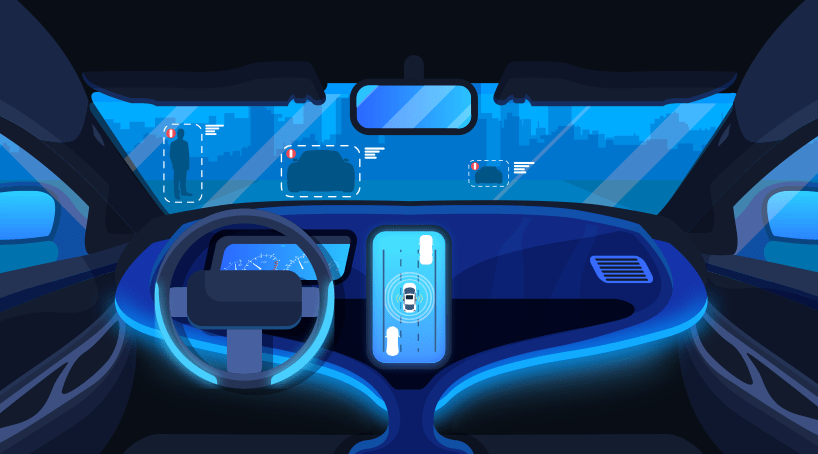Your cart is currently empty!
World Of AI
You know AI… But do you know there are different types of AI? Know all about AI
Artificial Intelligence (AI) has become an integral part of many industries, and its capabilities have expanded significantly over the past few years. From enhancing business operations to enabling groundbreaking advancements in medicine and entertainment, AI is revolutionizing our world. However, AI is not a single monolithic technology. It encompasses a range of techniques and systems, each designed for different purposes. In this article, we will explore the different types of AI and their uses in various sectors.
1. Artificial Narrow Intelligence (ANI)

Also known as “Weak AI”, Artificial Narrow Intelligence is designed to handle a specific task or a narrow set of tasks. ANI does not possess general cognitive abilities and is limited to the functions it was programmed or trained to perform.
Uses of ANI:
Virtual Assistants: AI-powered assistants like Siri, Alexa, and Google Assistant are all examples of ANI. They can perform tasks such as setting reminders, sending messages, or playing music but are limited to specific functions.
Recommendation Systems: Platforms like Netflix, Spotify, and Amazon use ANI to recommend content based on user preferences and past behavior.
Autonomous Vehicles: Self-driving cars rely heavily on ANI to handle specific tasks, such as navigation, obstacle detection, and route optimization.
Medical Diagnosis Tools: AI models are trained to detect specific diseases (e.g., analyzing medical images to identify tumors) but do not possess general understanding or reasoning abilities.
2. Artificial General Intelligence (AGI)

Often referred to as “Strong AI” or “Human-Level AI”, Artificial General Intelligence represents a type of AI that can understand, learn, and apply intelligence across a broad range of tasks. AGI can theoretically perform any intellectual task that a human being can do. However, AGI is still theoretical and has not yet been realized.
Potential Uses of AGI (when developed):
Complex Problem-Solving: AGI could assist in addressing complex global issues like climate change, resource distribution, or solving unsolved mathematical problems.
Human-like Interaction: AGI could transform customer service, education, and healthcare by offering personalized, human-like responses and insights across a wide range of subjects.
Creative Fields: AGI could revolutionize the fields of art, music, and literature, generating innovative and original content at the level of human creativity.
3. Artificial Superintelligence (ASI)
Artificial Superintelligence is an advanced form of AI that surpasses human intelligence across all fields, including creativity, problem-solving, and social intelligence. ASI remains a concept rather than a practical reality. The development of ASI raises profound ethical and safety concerns.
Potential Uses of ASI: Optimization of Society: ASI could potentially optimize everything from government policies to economic systems and health care, maximizing efficiency and resource use on an unprecedented scale.
Scientific and Technological Innovation: ASI could drive breakthroughs in fields such as physics, medicine, and engineering, solving problems that are currently beyond human comprehension.
Global Risk Management: ASI could predict and prevent large-scale risks, such as pandemics, climate disasters, or geopolitical conflicts, by analyzing data at a speed and accuracy far beyond human capabilities.
4. Reactive Machines (Simple AI)

Reactive machines are the most basic type of AI. They are designed to respond to specific inputs with predetermined outputs, with no memory or ability to learn from past interactions. These AI systems do not store experiences and cannot use previous data to influence future behavior.
Uses of Reactive Machines:
Chess-playing AI: IBM’s Deep Blue, which defeated world chess champion Garry Kasparov, is an example of a reactive machine. It analyzes the current state of the game and selects the best move based on predefined algorithms.
Basic Automation: Reactive AI is often used in simple automation tasks, such as sorting items on a production line or controlling traffic lights based on real-time data.
5. Limited Memory AI

Limited Memory AI is more advanced than reactive machines because it can make use of past experiences or historical data to inform future decisions. However, its memory is limited and doesn’t retain data indefinitely. These systems learn from specific examples but cannot generalize their knowledge.
Uses of Limited Memory AI:
Autonomous Vehicles: Self-driving cars use limited memory AI to process data from sensors, cameras, and past experiences to make decisions in real time (e.g., avoiding collisions or following traffic laws).
Fraud Detection: AI systems used in banking or e-commerce analyze past transactions to identify patterns indicative of fraudulent behavior.
Customer Service Chatbots: AI chatbots can remember previous interactions with customers to provide personalized responses in future chats.
6. Theory of Mind AI
Theory of Mind AI is still a theoretical concept, building on the idea that an AI system could understand the thoughts, emotions, beliefs, and intentions of humans. This type of AI would be able to interact with humans in more intuitive ways, taking into account emotional and psychological states.
Potential Uses of Theory of Mind AI: Healthcare Assistants: In healthcare, this AI could assist in understanding patient emotions and mental states, improving mental health support or providing personalized treatment options.
Human-Robot Interaction: Theory of Mind could be pivotal in human-robot interactions, allowing robots to understand and adapt to the emotional needs of humans, which could be useful in industries like elderly care or therapy.
7. Self-Aware AI
Self-aware AI is a hypothetical form of AI that would possess consciousness or self-awareness. This type of AI would have a sense of its own existence, making it fundamentally different from all other forms of AI. As of now, self-aware AI is purely speculative and has not been developed.
Potential Uses of Self-Aware AI (if developed): Ethical Decision-Making: Self-aware AI could make autonomous decisions based on ethical considerations, balancing the well-being of individuals with the broader societal good.
Advanced Robotics: In industries requiring high-level decision-making, such as military or space exploration, self-aware AI could independently assess complex scenarios and make critical decisions.
Conclusion: The Diverse World of AI
AI is not a one-size-fits-all technology. Its capabilities vary widely depending on the type of AI and the tasks it is designed to perform. While **Artificial Narrow Intelligence** is already impacting everyday life in a range of industries, more advanced forms like “Artificial General Intelligence” and “Artificial Superintelligence” hold the potential to transform society in profound ways. Whether in healthcare, transportation, or entertainment, AI will continue to evolve, enabling new possibilities and challenges along the way.
As we move forward, the development of more sophisticated AI will raise important questions about ethics, governance, and control. Regardless of its type or form, AI promises to be a defining force of the 21st century, driving innovation and shaping the future of technology.


